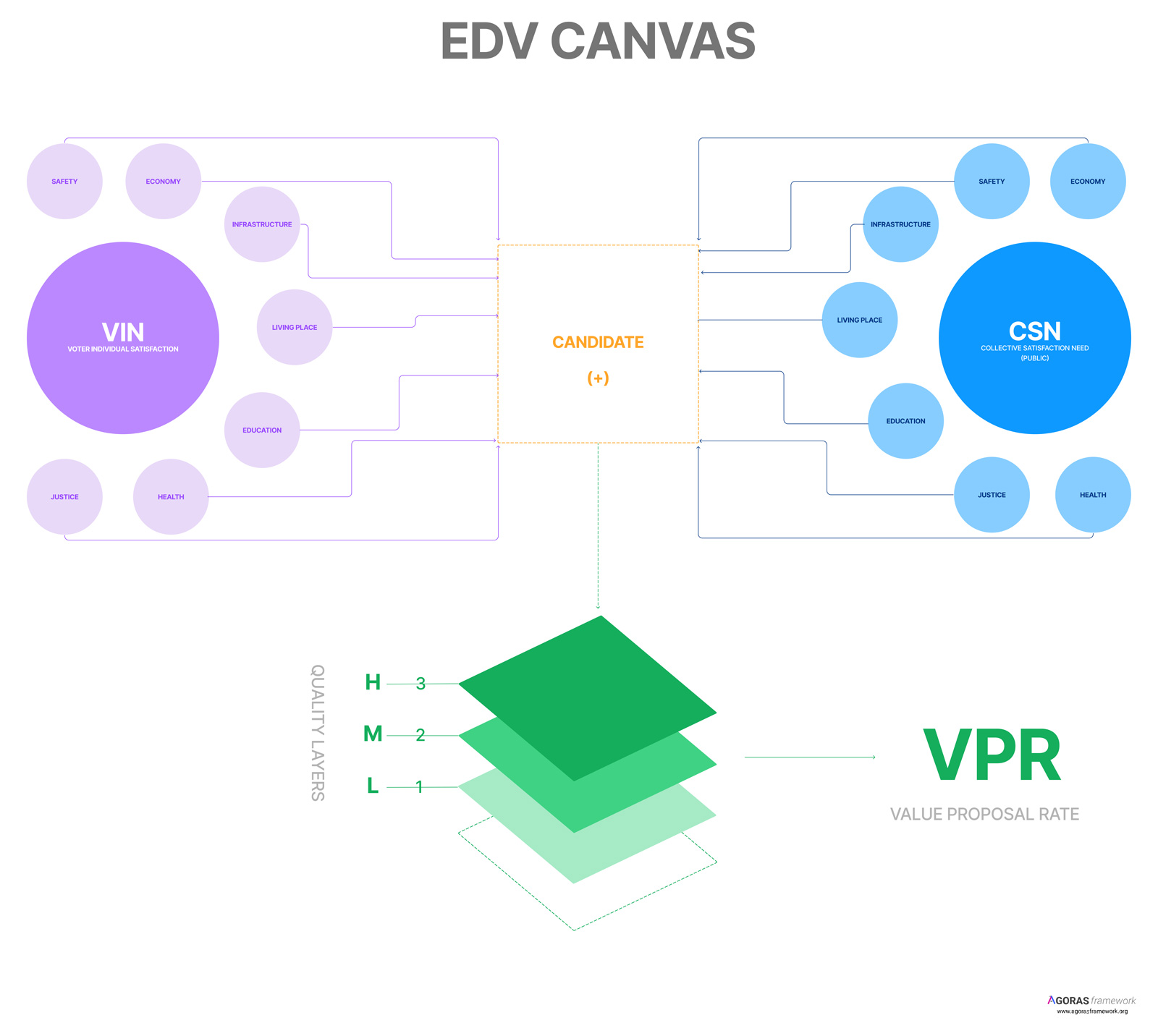Electoral Delivery Value Canvas
OVERVIEW
The Electoral Delivery Value Canvas is a method that is used later at the beginning of the first phase of the Road Map (Formation). Its purpose is to focus on the compatibility between the candidate's proposals for individual needs (what voters request) and group public needs (what the State needs). Through the EDV Canvas, the candidate is positioned as an intermediate point with proposals that add value the more compatible they are between them. In the end, the higher the average PVR (Proposal Value Rate), the higher the quality of the campaign proposals, delivering solutions to the needs of the voters and differentiated value for the State.
The EDV Canvas has a dynamic structure in order to achieve goals and maintain a high PVR. On the other hand, due to its methodology and design, it makes it transcend the Electoral Campaign, reaching the Political Campaign as a tool that helps them to evolve in their proposals.
HOW IT WORKS
Before designing the EDV Canvas and the data obtained in the first Lap (Research), the team prepares the information and groups it from left to right. On the left, the VIN (What the voter wants), on the right the Public Collective Satisfaction Needs (What the voter needs) and in the center the initial proposals of the candidate.
Each sphere groups 1 type of need and they are segmented into bubbles that represent the ¹basic needs:
Security
Economics
Infrastructure
Housing
Education
Health
Justice
Each need presented in the EDV has +1 as an initial value and compatibility with the candidate's proposal reflects +2 as a sum. If the compatibility spans between VIN+Candidate+CSN, the result is +3.
Example:
VIN+Candidate: +2
CSN+Candidate:+2
VIN+Candidate=CSN: +3
CORNER CASES
When the proposals are prepared and the candidate works as a team, there is a high probability that there will be more than one coincidence at the time of making the sum of compatibilities. Beyond this being something highly probable, they are situations that occur outside the normal parameters of the EDV Canvas and we call them Corner Cases. For this type of case it is important to understand that the maximum sum between values will always be +3 and the minimum is Neutral (0).
The addition of compatibilities between needs is not just a summation with a merely numerical result, it is the addition of value between the two types of needs and the candidate. In order for there to be delivery of value, the candidate's proposals must function as a connecting bridge between the two types of needs.
Among the situations that occur we can find:
A need is compatible with more than 1 candidate proposal or vice versa. The result is +2 (medium quality).
A need is compatible with more than 1 candidate proposal and more than 1 need of different type. The result is +3 (high quality).
A candidate's proposal is not compatible with any of the 2 types of needs. The result is +1 (low quality).
The sum of a need cannot advance if it is not compatible with the candidate's proposals. For example, a VIN compatible with a CSN but both are not compatible with the candidate. The result is neutral (0). Both needs, being compatible with each other, do not provide any value if they are not part of the candidate's proposal.
Maintaining a good rate reflects not only the quality of the campaign proposals but also how similar they are to what individuals and the State need.




